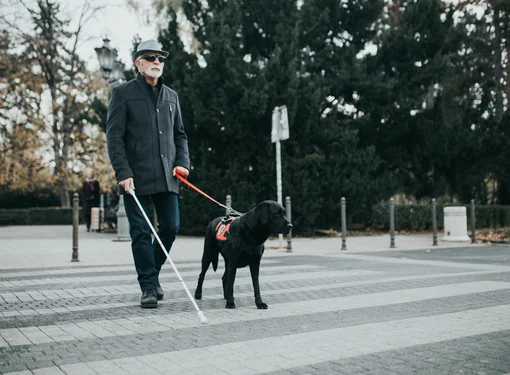White Cane Week is Here!
Each year in the first week of February, Canada comes together to celebrate White Cane Week. This special week is dedicated to raising awareness about the challenges faced by Canadians living with vision loss. It is a time to highlight the white cane, not only as an important tool for safe navigation but also as an important symbol of independence. Throughout the week, people learn about the experiences of those with sight loss and celebrate their accomplishments.
What is a White Cane?
A white cane is a tool that helps people with vision loss move around safely and confidently. It is used both as a mobility aid and as an identification tool. In general, the white cane helps the user sense obstacles or changes in the environment.
This simple yet effective tool plays a big role in the everyday lives of those who rely on it.
A Brief History of the White Cane
The story of the white cane began between the World Wars. In 1921, a man named James Biggs from Bristol lost his sight. To stay safe around increasing motor vehicle traffic, he painted his cane white so that drivers would see him more easily. Over the next few years, similar efforts were observed in France, the United Kingdom, and North America. By 1931, the white cane had become a widely recognized tool that signaled vision loss while also offering practical help in navigating the world. After World War II, Dr. Richard Hoover introduced the "long cane". It was designed to help veterans who were blind navigate their surroundings safely, and it further established the white cane as a key tool for independence and safe travel.
Types of White Canes
There are different types of white canes, each designed for specific needs.
- Symbol Cane: This type of white canes is designed for people with low but useful vision. is not meant to touch the ground. In general, the user holds the symbol cane in front of themselves to let people around them know that they are partially sighted.
- Guide Cane: A guide cane is a shorter cane that is used to catch any immediate obstacles. This cane is used to find obstacles such as curbs and steps more effectively. It offers a good balance between safety and convenience.
- Long Cane: The long cane is primary designed as a mobility tool. Its end has a tip that is either rolling or pointed, which stays in contact with the ground, and allows the user to detect obstacles, changes on the ground, or steps. The cane is used by either rolling or tapping from side-to-side as the user walks.
Cane Colours and Their Meanings
The colour of a white cane’s tip (or sometimes the entire cane) carries specific meanings:
- All-white cane : Indicates that the user is completely blind.
- White cane with a red bottom : Indicates that the user has some usable vision.
- White and red striped cane : Indicate that the user is both blind and deaf.
White Cane Week is an important time to recognize the challenges faced by people with vision loss and to promote independence and accessibility. By learning more about white canes, we can help build a more inclusive world.







